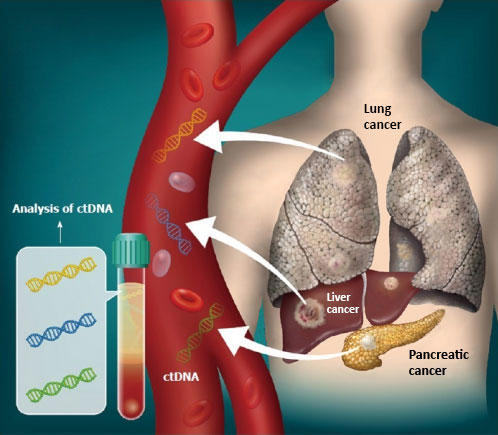Can you imagine going to a doctor's surgery and have an eye scan at the front desk that can reveal if you have heart disease, dementia, or even cancer?
That day might not be as far away as we think, according to CERA researchers specialising in the relatively new field of 'oculomics', a term that was only coined several years ago.
Associate Professor Lisa Zhuoting Zhu leads a team of researchers excited by the field and exploring ways that Australia can be at the forefront of new discoveries.
Associate Professor Zhu said that while doctors have been inspecting the eyes of patients to try to identify ailments for centuries, recent advancements in technology and understanding have expanded into the molecular and genetic makeup of the eye.
"Disorders of almost all vital organs can have manifestations in the eye, affecting structures from the external eye to the inner retina," Associate Professor Zhu says.
"For example, dry eyes can suggest rheumatoid arthritis, and scleral yellowing is a sign of jaundice.
"The retina provides direct visualisation of two critical organ systems – the microvasculature (the network of small blood vessels) and the nervous system – that are largely inaccessible elsewhere in the body.
"Now we have oculomics: the study of systemic disease through non-invasive and user-friendly retinal imaging."
Associate Professor Zhu supervises PhD students Dr Wenyi Hu and Dr Yujie Wang, who were key co-authors on her recent publication in the journal Progress in Retinal and Eye Research. The review highlighted three key developments that have accelerated the progress in the field:
- Advanced imaging technology ('hardware') - high-resolution, non-invasive eye imaging tools like fundus photography (used to take images of the interior surface of the eye), optical coherence tomography (OCT), and OCT angiography that can capture incredible detail of eye structures, down to the cellular level.
- Large-scale health datasets ('big data') - major population studies that collect eye images and comprehensive health information mean there are now opportunities to discover connections between eye features and systemic diseases.
- Artificial intelligence ('software') - Advanced AI techniques can analyse thousands of eye images to identify subtle patterns invisible to human observers, linking patterns to various health conditions.
Dr Wenyi Hu is excited to be working in the field.
"This field of ophthalmology is not a concept anymore - we are already doing it," she says.
Dr Hu recently led a project that for the first time tested the use of an AI powered eye scan in GP clinics to screen patients for cardiovascular disease.
"Each patient had an eye scan taken with a desktop retinal camera, which scanned the blood vessels at the back of the eye and received a real-time AI-generated report of their risk," she says.
Dr Yujie Wang is working on a project that will use retinal imaging and AI in emergency department to help doctors detect serious health issues.
"In emergencies, a quick eye photo can reveal signs of problems such as brain pressure or blocked vessels," she says.
"It could help doctors act fast and save lives."
But can CERA oculomics researchers envisage a time when it is standard for patients to have a routine eye scan, searching for anything from anaemia to the risk of Parkinson's Disease?
"I would say that is likely," says Dr Hu.
"Of course, there needs to be much more research and there needs to be a system to ensure there is a smooth workflow for every patient to do it."
In May, Associate Professor Zhu chaired a symposium surrounding oculomics in the Association for Research in Vision and Ophthalmology (ARVO) annual conference in the USA.
"I received a lot of questions from the audience about future directions in the field," she says. "We have a fantastic team at CERA, and we really want to push this area of research forward."
The team acknowledges that important challenges need to be addressed.
"Creating diverse datasets that represent different population groups is critical," Associate Professor Zhu says.
"AI systems trained on limited populations may not work effectively for everyone, potentially creating healthcare disparities instead of solving them."
Other challenges include:
- Standardising imaging protocols across different equipment and clinical settings
- Conducting larger, longer-term studies to better understand how eye changes relate to disease progression
- Translating research findings into practical tools that clinicians can use confidently.
"The path from promising research to clinical implementation requires rigorous validation," Associate Professor Zhu says.
"We need to ensure the technologies work reliably across diverse populations and settings before they can transform healthcare."
Read the research:
Zhuoting Zhu, Yueye Wang, Ziyi Qi, Wenyi Hu, Xiayin Zhang, Siegfried K. Wagner, Yujie Wang, An Ran Ran, Joshua Ong, Ethan Waisberg, Mouayad Masalkhi, Alex Suh, Yih Chung Tham, Carol Y. Cheung, Xiaohong Yang, Honghua Yu, Zongyuan Ge, Wei Wang, Bin Sheng, Yun Liu, Andrew G. Lee, Alastair K. Denniston, Peter van Wijngaarden, Pearse A. Keane, Ching-Yu Cheng, Mingguang He, Tien Yin Wong, Oculomics: Current concepts and evidence, Progress in Retinal and Eye Research, Volume 106, 2025, https://doi.org/10.1016/j.preteyeres.2025.101350
Two leading CERA researchers have received prestigious five-year fellowships to further their research aimed at earlier detection and treatment of age-related macular degeneration and cardiovascular disease.
New research examines the benefits of using AI retinal imaging to screen for cardiovascular disease in GP clinics, and identifies areas for improvement.






